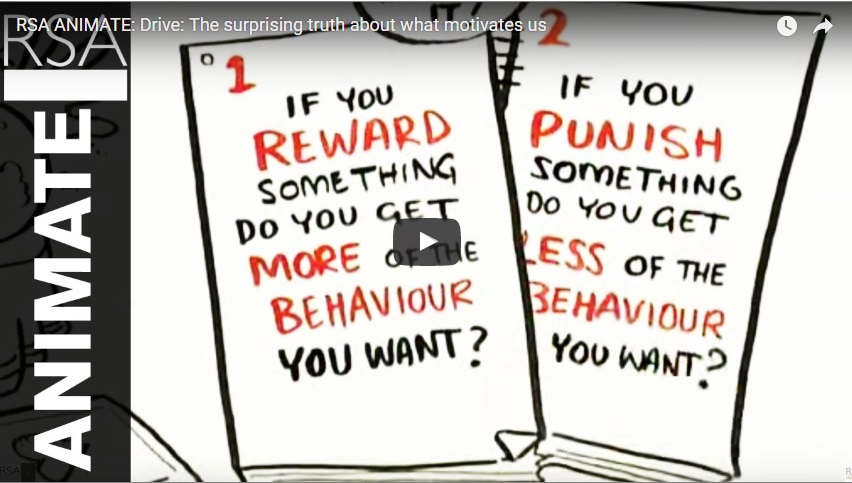Three things that will increase employee motivation
Everyone who runs a business large enough to employ people has one problem in common; managing and motivating staff.
Whether it’s two or two hundred employees, managing staff can be hard work, and cause headaches for businesses on a number of fronts.
Wouldn’t it be great if we were able to know exactly what motivates people in the workplace, so as to better understand our employees, and adjust operations and management styles to suit?
Short answer, yes, that would be great.
Though we can’t get inside the minds of our employees, we can look at studies that have all but done exactly that.
Dan Pink from RSA Animate and author of “Drive – The surprising truth about what motivates us“, in this video, looks at a study conducted by Massachusetts Institute of Technology (M.I.T) that looks at motivation and rewards in the workplace and draws some very interesting conclusions. We strongly encourage you to check it out.
THE STUDY
M.I.T gave students different challenges to complete, in the areas of math, problem solving and physical or spatial problems.
Each was incentivised with monetary rewards: for low performance, a small reward, for moderate performance, an average reward, and for excellent performance a large reward.
They essentially based this challenge on the typical business motivation scheme that says “if you do this, you get this,” which rewards high performers, and ignores the low.
THERE WERE UNEXPECTED RESULTS
When the tasks were fully mechanical, and involved individuals following rules or procedures to reach an outcome, higher pay led to better performance, as expected.
What was interesting though, was that when the tasks called for basic cognitive skills, the larger reward led to poorer performance, over and over again,
The incentives seemed to work in reverse.
Those running the study even took it to a place in the world where the money meant more – India – to see if the results improved.
Once again, high rewards for tasks that involved problem solving and creativity, lead to poor performance.
WAIT, ISN’T MONEY A GOOD MOTIVATOR?
Money is a good motivator, we know this because if you don’t pay employees enough, they will become easily unmotivated.
The key is in paying people enough to take the issue of money off the table, so they are able to think about the things that really drive them.
SO IF NOT MONEY, WHAT DOES LEADS TO BETTER PERFORMANCE?
There are 3 factors that lead to better performance and satisfaction in the workplace; autonomy, mastery, purpose.
Autonomy is the desire to be self-directed, which traditional management styles have no room for, though self-direction is critical for employee engagement and ongoing motivation.
Even if the freedom to be self-directed comes only once a week or once a month, businesses benefit radically by letting employees have time to work alone, on projects they are driven to complete.
Mastery is the urge to get better at something; something we all have within us. It is satisfying to work and get better at things we enjoy.
This is why people volunteer to do things, with no monetary reward to come at the conclusion of the job. They are improving a skill, and doing something good for other people.
And finally purpose, the notion that what you are doing will not only better your life, but the lives of others also.
When the profit motive is held in higher regard than the purpose motive, organisations can act in an unethical way.
SO HOW CAN I IMPLEMENT THESE FINDINGS IN MY BUSINESS?
The first step, as Dan Pink says, is to start treating people like people, not like robots that are there to work, get paid, and go home.
Giving employees autonomy, and letting them work to achieve mastery and fulfil a purpose, will lead time and time again to better performance.
One of the biggest takeaways we discovered from the video, is paying your employees enough to ensure money is no longer an issue. Take it off the table so to speak, then they can get focused on what stimulates their interests and challenges and ultimately the fulfillment they get from doing a great job. It effectively creates an environment for the most meaningful work to take place and for your employees to take higher ownership of their roles.
This is just a snap shot of the valuable insight Dan Pink has delivered here and we hope by exposing you to it, you can find some valuable keys to unlocking employee motivation in your workplace.
For more information, watch RSA Animate’s video here on YouTube


